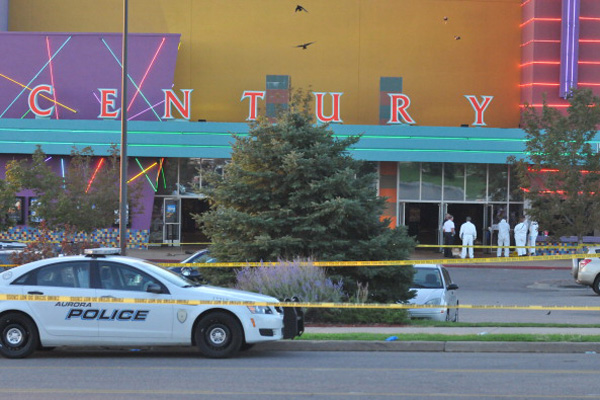3Qs: Analyzing the Colorado shooting tragedy

[media-credit id=20 align=”alignright” width=”150″] [/media-credit]A shooter opened fire in a crowded Colorado movie theater on Friday, killing 12 people and wounding 59 others who had been watching a midnight showing of the highly-anticipated new Batman movie. We asked Jack Levin, the Brudnick Distinguished Professor of Sociology and Criminology at Northeastern University, to comment on the tragedy.
[/media-credit]A shooter opened fire in a crowded Colorado movie theater on Friday, killing 12 people and wounding 59 others who had been watching a midnight showing of the highly-anticipated new Batman movie. We asked Jack Levin, the Brudnick Distinguished Professor of Sociology and Criminology at Northeastern University, to comment on the tragedy.
The movie theater rampage took place just 15 miles from the site of the 1999 Columbine High School massacre. Is there any correlation between the two?
A copycat influence is certainly more than possible. The Columbine tragedy in April 1999 has inspired many homicides, not only in the United States but also in Finland, Norway, Germany and England. To this day, the term “doing a Columbine” remains part of our vernacular. The impact of some infamous episode is particularly strong in communities located in proximity to it. Still, it is not at all clear that the perpetrator of Aurora, Colo., massacre had been influenced by the Columbine rampage. More likely (and unlike most mass killers whose psychopathology is strictly situational), he suffered from a profound mental illness (e.g., schizophrenia) that impaired his ability to think clearly and left him utterly confused.
Police officials have said that the suspected gunman’s apartment was heavily booby-trapped with trip wires connecting incendiary and chemical devices. Given that the suspect surrendered after being confronted by police and reportedly admitted to setting the booby traps, why would he go through the trouble of rigging his apartment?
The killer’s deadly attack lasted no more than one minute. Booby-trapping his apartment with explosives may have been meant to keep the “fun” going for a longer period of time. It also indicates just how confused the killer was. On the one hand, he rigged the apartment with explosives, so as to kill the police officers who arrived. On the other hand, he informed the police before they attempted to enter.
Mass shootings tend to spark arguments from both gun control advocates and gun rights groups. What tangible impact would carry permits or tighter restrictions on gun purchasing have on mass murder?
We need to get the small caliber handguns out of the reach of gang members and other young people who will shoot to kill in response to any challenge to their pride or dignity. The typical homicide is single-victim; there are some 15,000 annually. This is where we should be placing our efforts to establish strict gun control. Mass killers who target anything that moves in a public setting are unlikely to be deterred. They usually have no criminal record, and are able to purchase a firearm legally. Guns are only a part of the problem. Timothy McVeigh bombed a federal building in Oklahoma City, taking the lives of 168 men, women, and children. Moreover, the residents of countries like Canada and Switzerland have access to high-powered rifles, but they don’t choose to use them on other human beings. These countries have extraordinarily low rates of homicide. They also experience few public executions perpetrated by troubled murderers.





